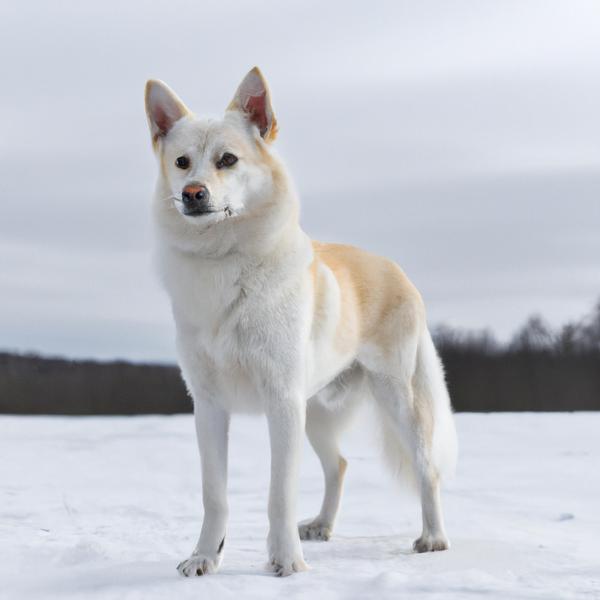Eskijack vs. Afghan Bay Retriever: Breed Differences and Similarities
Hypoallergenic
Are Eskijacks or Afghan Bay Retrievers hypoallergenic, or neither?
Unfortunately, neither Eskijack nor Afghan Bay Retriever are hypoallergenic, which may not make them the best choice for dog lovers who suffer from pet allergies.
Temperament
What are the personalities of Eskijack and Afghan Bay Retriever dogs?
Stubborn
Independent
Energetic
Protective
Alert
Courageous
Intelligent
Friendly
Cheerful
Aloof
Dignified
Independent
Clownish
Happy
Protective
Intelligent
Affectionate
Dominant
Quiet
Shedding Level
Do Eskijacks shed more than Afghan Bay Retrievers, or which breed sheds more, Eskijacks or Afghan Bay Retrievers?
Eskijacks shed a lot of hair each year, so frequent brushing is essential for reducing shedding and maintaining coat health.
Afghan Bay Retrievers are moderate shedders, but regular brushing can reduce shedding and maintain coat health.
Ancestry
What are the origins of Eskijack and Afghan Bay Retriever breeds?
American Eskimo, Jack Russell Terrier
Chesapeake Bay Retriever, Afghan Hound
Date of Birth
When were Eskijack and Afghan Bay Retriever breeds first developed?
Unknown
Eye Color Possibilites
What are the eye colors of Eskijack and Afghan Bay Retriever dogs?
Brown
Brown
Amber
Coat Color Possibilites
What are the natural colors of the coat for Eskijack and Afghan Bay Retriever breeds?
Cream
White
Brown
Red
Brown
Brindle
Sable
Gray
Coat Length
What is the typical coat length for Eskijack and Afghan Bay Retriever breeds?
Eskijacks have longer coats compared to most dogs.
Afghan Bay Retrievers have medium-length coats.
Coat Density
What is the density of the coat of Eskijack and Afghan Bay Retriever?
Coat Texture
What is the hair texture of Eskijack and Afghan Bay Retriever?
Wavy
Litter Size
What is the usual litter size for Eskijack and Afghan Bay Retriever?
An Eskijack can have a litter of 4-8 puppies on average. However, it's worth noting that the size of the litters can vary greatly. Factors that can influence litter size include the health of the mother, breeding history, and genetics.
An Afghan Bay Retriever can have a litter of 7-9 puppies on average. However, it's worth noting that the size of the litters can vary greatly. Factors that can influence litter size include the health of the mother, breeding history, and genetics.
Adaptability
The adaptability of Eskijack and Afghan Bay Retriever dogs is a well-known trait. They are known for being able to adjust well to different living environments and lifestyle changes.
Health Issues
Between Eskijack and Afghan Bay Retriever, which breed is more prone to health problems?
Eskijack and Afghan Bay Retriever breeds are generally considered to be healthy. However, like all breeds, they are susceptible to certain health issues and it is important to keep an eye out for them and address them with your veterinarian as needed.
Major Concerns
What are the major health concerns for Eskijack and Afghan Bay Retriever breeds?
Hip Dysplasia
Legg-Calve-Perthes Disease
Progressive Retinal Atrophy (PRA)
Progressive Retinal Atrophy
Allergies
Hip Dysplasia
Von Willebrand's Disease
Hypothyroidism
Gastric Dilation Volvulus (GDV) or Bloat
Minor Concerns
What minor health issues should be kept in mind when owning Eskijack and Afghan Bay Retriever?
None
Cataracts
Occasional Tests
What occasional tests are recommended for Eskijack and Afghan Bay Retriever breeds?
X-Rays
CT Scan
Eye Examination
Physical Examination
X-Rays
Eye Examination
Allergy Tests
Complete Physical Examination
Abdominal Ultrasound
DNA for VWD
Social Needs
Eskijack vs Afghan Bay Retriever social needs comparison
Eskijack has above average social needs and thrives with interaction with humans and other dogs.
Afghan Bay Retriever has average social needs and is less independent than other breeds.
Sleeping Need
Which of the two sleeps the most/least: Eskijack or Afghan Bay Retriever?
Eskijack and Afghan Bay Retriever are active dogs that may not require as much sleep as other breeds. However, they still need enough sleep to stay healthy.
Mouthiness
Mouthiness Comparison: Eskijack vs Afghan Bay Retriever?
Roaming urge
Eskijack vs Labrador: Running away tendency?
Prey Drive
Eskijack or Afghan Bay Retriever - which breed has a higher level of prey drive?
Activity Level
Which breed has higher energy, Eskijacks or Afghan Bay Retrievers?
Eskijack and Afghan Bay Retriever are high-energy dogs that require a lot of mental and physical exercise. Without proper stimulation and attention, these breeds can become problematic. If you're considering these breeds, be prepared to invest time and effort in their exercise and training.
Tolerance of being left alone
Walks per Week
How many miles should Eskijack or Afghan Bay Retriever walk each week?
There's really no limit to how far you walk your dog as long as they're comfortable. For Eskijack, it's at least 11 miles / week. Just remember to build distance and stamina gradually over time.
There's really no limit to how far you walk your dog as long as they're comfortable. For Afghan Bay Retriever, it's at least 12 miles / week. Just remember to build distance and stamina gradually over time.
Activity per Day
Do Eskijacks or Afghan Bay Retrievers require more exercise?
In general most Eskijacks usually need at least 90 minutes of exercise daily. This can be spread across the day and include all sorts of high-energy activities, like walking, running and playing.
In general most Afghan Bay Retrievers usually need at least 60 minutes of exercise daily. This can be spread across the day and include all sorts of high-energy activities, like walking, running and playing.
Grooming
Which breed is easier to maintain in terms of grooming, Eskijacks or Afghan Bay Retrievers?
The Eskijack requires an average amount of grooming compared to other breeds.
Afghan Bay Retrievers require significant grooming, including regular trims and professional grooming assistance to maintain their coat. They may also require frequent bathing to keep their coat and skin healthy.
Brushing Frequency
What is the recommended brushing frequency for Eskijack and Afghan Bay Retriever dogs?
Eskijack and Afghan Bay Retriever should be brushed at least once a week. Of course, you can give them more frequent brushes if you find that they are still shedding a lot.
Brushing Tools
What brushing tools are used for Eskijacks and Afghan Bay Retrievers?
Pin Brush
Comb
Clipper
Nail Clipper
Pin Brush
Comb
Nail Clipper
Cups
How much food should be given to Eskijack or Afghan Bay Retriever in cups?
Eskijack and Afghan Bay Retriever share the same recommended daily food intake of 3 cups, although the appropriate quantity may vary depending on the quality and nutritional content of their food.
Daily Cost
Which breed has a higher daily cost, Eskijack or Afghan Bay Retriever?
The average cost of an Eskijack is somewhere $1.70 - $2.00 per day.
The average cost of an Afghan Bay Retriever is somewhere $2.10 - $2.70 per day.
Monthly Cost
Which breed has a higher monthly cost, Eskijack or Afghan Bay Retriever?
The average per month expenses of an Eskijack is between $48 - $63. This makes an average of $576 - $756 per year. It will be on the higher side when the dog is still small because it will need more frequent visits to the vet, shots.
The average per month expenses of an Afghan Bay Retriever is between $55 - $73. This makes an average of $660 - $876 per year. It will be on the higher side when the dog is still small because it will need more frequent visits to the vet, shots.
Sensitivity Level
How do Eskijack and Afghan Bay Retriever compare in sensitivity?
These breeds are more sensitive than others and easily overwhelmed by new surroundings and people. Eskijack and Afghan Bay Retriever need gentle handling and a calm, stable home environment with positive reinforcement training.
Apartment Friendly
Which breed is more apartment-friendly: Eskijack or Afghan Bay Retriever?
Eskijacks and Afghan Bay Retrievers are dogs that do well in apartments with sufficient exercise, but they would really appreciate a small yard.
Child Friendly
Do Eskijacks or Afghan Bay Retrievers have a friendlier temperament towards children?
Eskijack and Afghan Bay Retriever are kid-friendly dogs. They are good with children and excellent dogs with children if they are socialized and trained at a young age.
Senior-friendly
Which dog is more suitable as a pet for the elderly - Eskijack or Afghan Bay Retriever?
Cat Friendly
Do Eskijack or Afghan Bay Retriever breeds have a better compatibility with cats?
Eskijacks and Afghan Bay Retrievers are an average cat friendly dog. They do well with cats, even more if raised together from puppyhood.
Dog Friendly
Which breed is more sociable with other dogs: Eskijack or Afghan Bay Retriever?
Eskijacks are friendly and active companions, and can be good family pets, though their friendliness towards other dogs may vary.
Afghan Bay Retrievers are average in their friendliness towards other dogs, and socialization can help.
Pet friendly
How do Eskijack or Afghan Bay Retriever dogs interact with other pets?
Stranger Friendly
Which breed is more friendly with strangers: Eskijack or Afghan Bay Retriever?
Eskijacks are averagely friendly around strangers but benefit from early socialisation.
Afghan Bay Retrievers are quick to announce strangers and can be standoffish or suspicious.
Playfulness
Which breed is more playful between Eskijack and Afghan Bay Retriever?
Eskijacks are very playful, so adopting an older one might be a better option for a more relaxed experience.
Afghan Bay Retrievers are a playful breed that needs daily playtime to be happy.
Trainability
How do the trainability levels of Eskijacks and Afghan Bay Retrievers compare?
Eskijacks are popular for their ease of training and quick learning ability.
Afghan Bay Retrievers are usually easy to train but require consistency to fully obey commands.
Compare Eskijack with other breeds
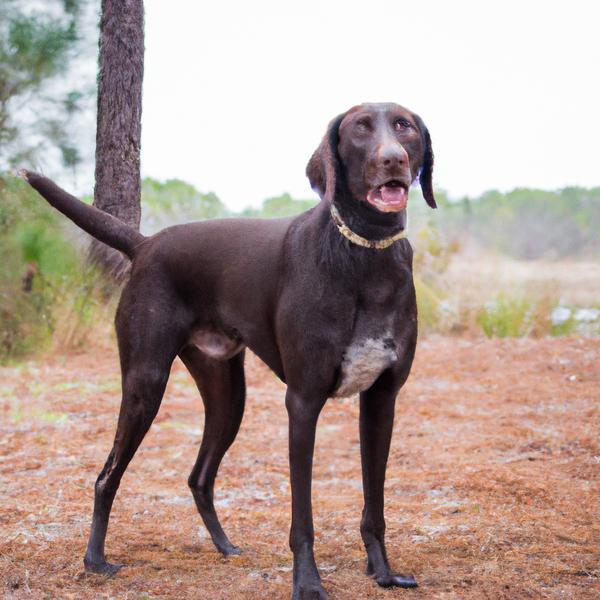
German Shorthaired Lab
Eskijack vs German Shorthaired Lab
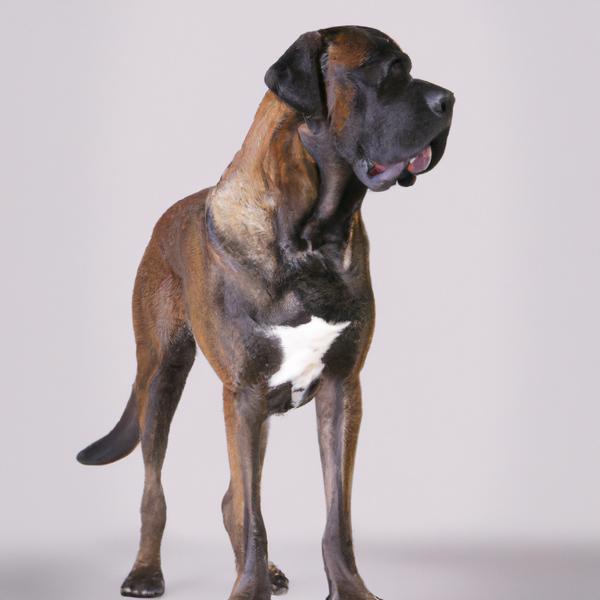
Neahond
Eskijack vs Neahond
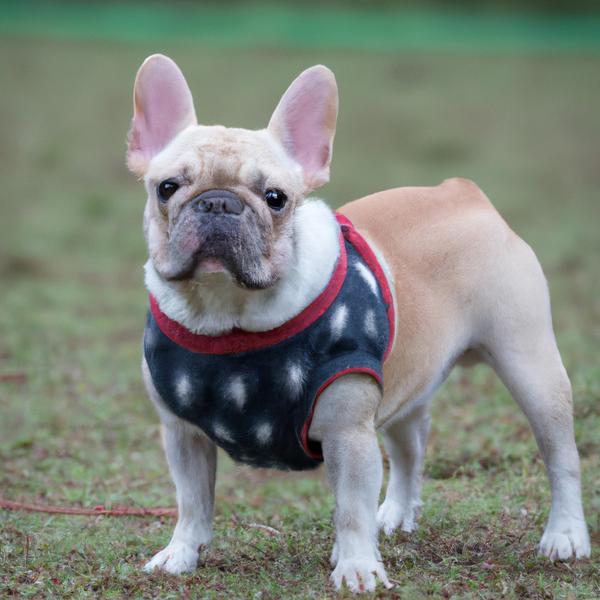
Frenchie-Pei
Eskijack vs Frenchie-Pei

Pinny-Poo
Eskijack vs Pinny-Poo
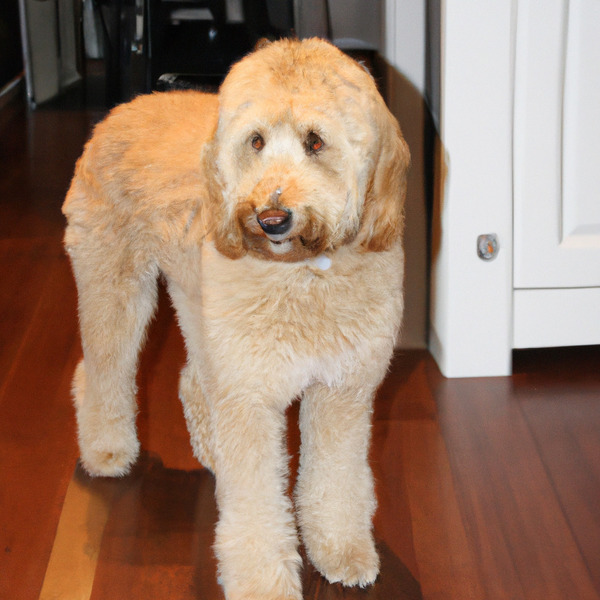
Goldendoodle
Eskijack vs Goldendoodle
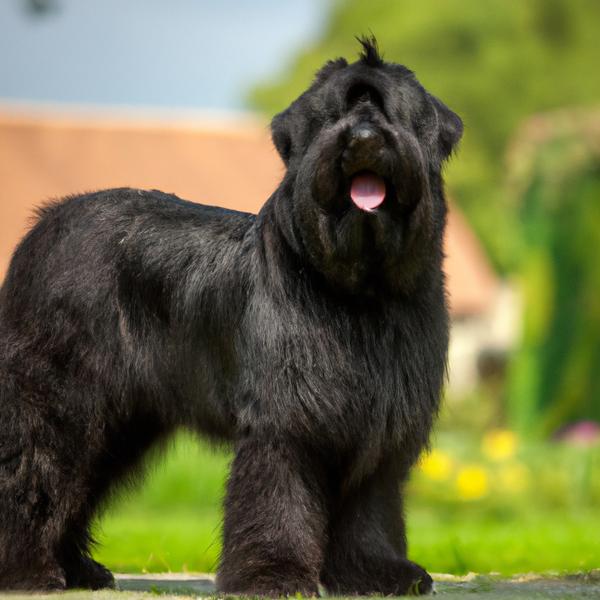
Giant Bolonauzer
Eskijack vs Giant Bolonauzer
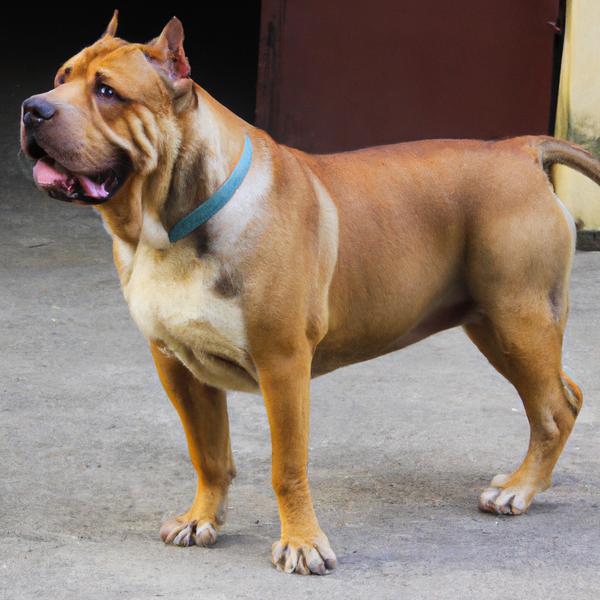
Masti-Bull
Eskijack vs Masti-Bull
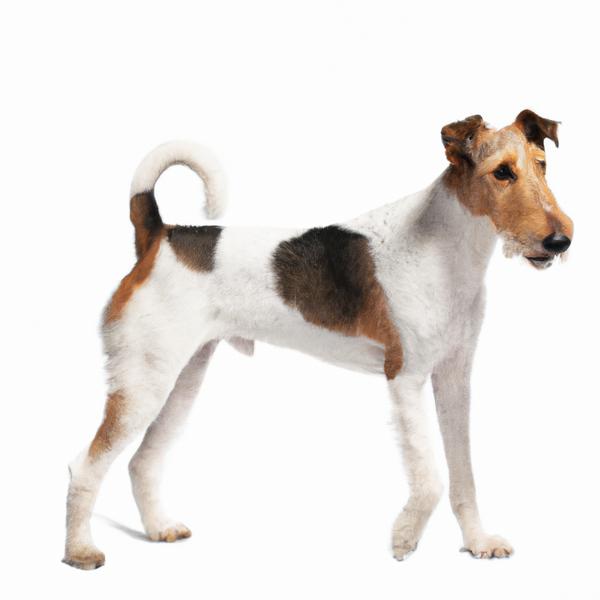
Smooth Fox Terrier
Eskijack vs Smooth Fox Terrier

Miniature Goldendoodle
Eskijack vs Miniature Goldendoodle

Afghan Bay Retriever
Eskijack vs Afghan Bay Retriever
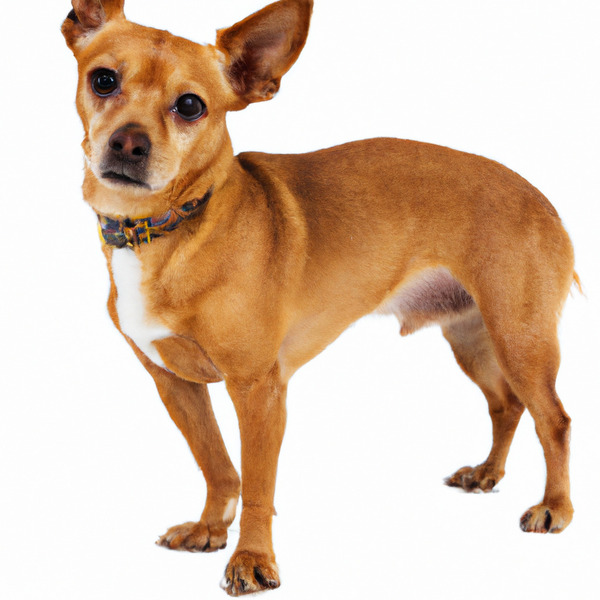
Taco Terrier
Eskijack vs Taco Terrier

Papshund
Eskijack vs Papshund
